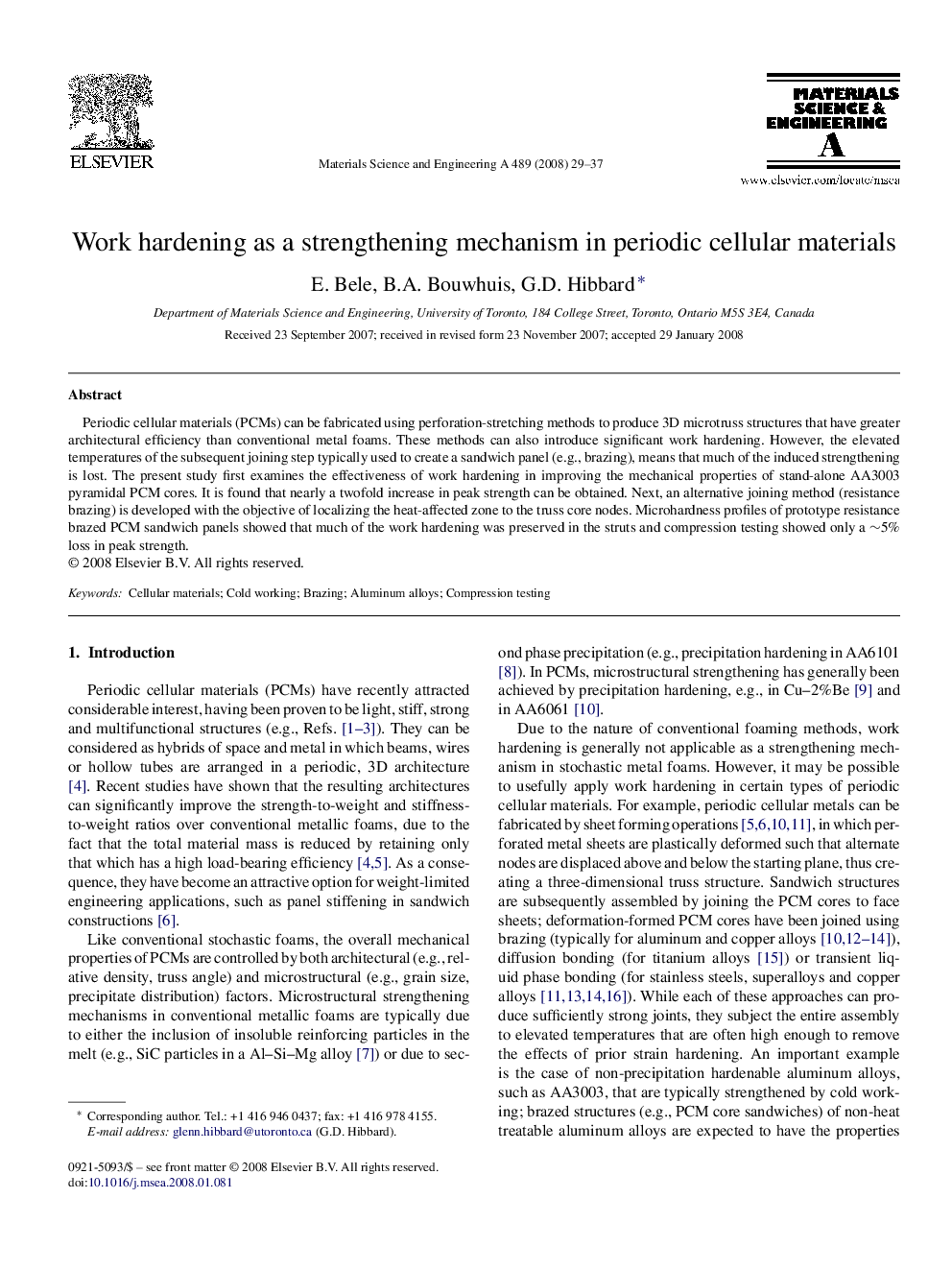| Article ID | Journal | Published Year | Pages | File Type |
|---|---|---|---|---|
| 1582091 | Materials Science and Engineering: A | 2008 | 9 Pages |
Periodic cellular materials (PCMs) can be fabricated using perforation-stretching methods to produce 3D microtruss structures that have greater architectural efficiency than conventional metal foams. These methods can also introduce significant work hardening. However, the elevated temperatures of the subsequent joining step typically used to create a sandwich panel (e.g., brazing), means that much of the induced strengthening is lost. The present study first examines the effectiveness of work hardening in improving the mechanical properties of stand-alone AA3003 pyramidal PCM cores. It is found that nearly a twofold increase in peak strength can be obtained. Next, an alternative joining method (resistance brazing) is developed with the objective of localizing the heat-affected zone to the truss core nodes. Microhardness profiles of prototype resistance brazed PCM sandwich panels showed that much of the work hardening was preserved in the struts and compression testing showed only a ∼5% loss in peak strength.
